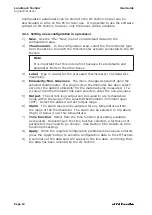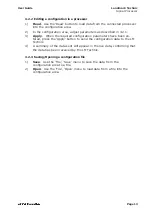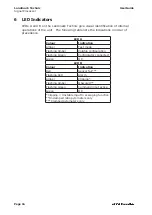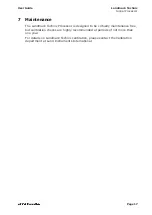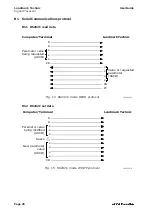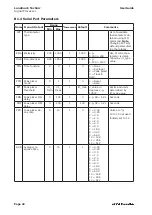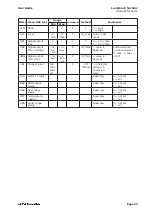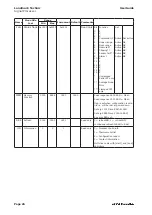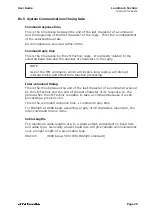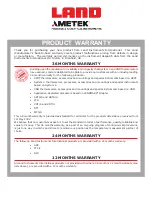
Page 15
User Guide
Landmark Technic
Signal Processor
5 Time Function Processing
5.1 Peak Picker
The Peak Picker function can be used to monitor the highest temperature
measured by the thermometer. This feature is useful especially for moving
targets and/or where the target is obscured partially e.g. a steel slab on a
rolling mill where parts of the surface are covered with scale. The ‘clean’
area will be at the higher (i.e. true) temperature. The Peak Picker used in
Landmark Technic processors has the following features. Refer to Fig. 10.
Threshold level:
Temperature above which the Peak Picker is active, used
in conjunction with the ‘ON’ and ‘OFF’ delay.
ON delay:
Time period between the temperature rising above the
threshold level and the Peak Picker function switching on
OFF delay:
Time period between the temperature falling below the
threshold level and the Peak Picker function switching off.
Mode:
In ‘Hold’ mode, at the end of the ‘OFF’ delay, the temper-
ature output value is held constant until the temperature
input next rises above the threshold level.
In ‘Reset’ mode, at the end of the ‘OFF’ delay, the tem-
perature output signal falls to ‘under-range’ until the tem-
perature input next rises above the threshold level. The
Peak Picker can be ‘Reset’ at any time by using the CMD
input. See 3.3.2.
Decay rate:
A user-adjustable value at which the stored temperature
output signal decays.
5.2 Track and Hold
Refer to Fig. 11. The Track and Hold time function is useful especially for
measuring intermittent processes e.g. items on a conveyor belt. The pres-
ence of a ‘hot’ object can be used to activate the ‘Track’ function, which
causes the output to display the temperature of the object. When the object
moves from the measurement area, the ‘Track’ function can be switched off
and the temperature value held until the next ‘hot’ object appears.
The Track and Hold function is controlled via the CMD (Command) input. See
3.3.2
5.3 Averager
Refer to Fig. 12. The Averager time function can be used to ‘smooth’ the
temperature output signal in relation to the temperature input. The aver-
ager response can be adjusted to suit your application. With a fast response
speed, the temperature output signal tracks the input signal closely, any rapid
fluctuations in the input are reflected in the output. With a slow response
speed, the temperature output signal is much smoother, displaying more the
‘trend’ of the input signal rather than rapid changes.












